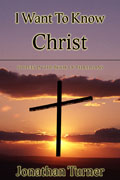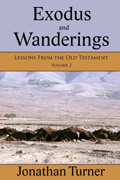My wife and I recently had the opportunity to spend a week at one of our National Parks. We reveled in being outdoors, surrounded by majestic landscapes. The scenery was breathtaking. Rugged peaks, sheer cliffs, alpine meadows, blue lakes, white glaciers and misting waterfalls met our delighted gaze on every hand. There seemed no end to multi-colored rocks, crystal-clear streams, delicate flowers, a wide variety of trees, berries and other plants. Then there was the fauna: multiple species of butterflies, buzzing insects, chipmunks, ground squirrels, woodpeckers, ptarmigans, deer and moose, not to mention grizzly bears. Added to the wonder were crisp breezes and clouds of fantastic shapes. And how does one describe the sound of vast watersheds? We were constantly threatened with sensory overload.
We live in a beautiful world. And it’s not confined to the National Parks. Each place has it’s own charm. Even something as mundane as a fruit fly hovering around a windfall pear is a marvel. How can something so tiny be so perfectly formed? How can such a small creature be equipped not only to fly, but fly such long distances relative to its size? The more I observe nature the more wondrous it seems. And why is it so gorgeous? Of what utility is beauty? God could have made everything strictly functional – and drab. (To those who say that God gave the birds bright plumage in order to attract mates, I reply that not all birds are so equipped. Both male and female sparrows are the same brown. The likes of buzzards who look rather repulsive also seem to give the lie to the argument.) For whatever reason God, in general, seems to have constructed things in such a way as to delight, as to serve a useful purpose. Even those birds and animals which appear drab have other qualities which amaze and stir our wonder. I can’t help but consider if the only purpose some things have is to be pretty and/or to give pleasure. As the Apostle Paul writes, God “…richly provides us with everything for our enjoyment.” (1 Timothy 6:17 NIV)
As much as I enjoyed the beauty surrounding us in the Park, I couldn’t help but wonder what might have been. The truth is that we live in a fallen world. What we have now; what we see around us – as beautiful as it is – is not what God intended. When Adam and Eve sinned it not only ruptured their relationship with their heavenly Father, it also distorted all of nature in ways we cannot begin to fathom. Paul indicates that with the entrance of sin, this entire universe became subject to decay. To put it another way, it is in some way being held hostage to sin. It groans waiting for release – which will not come until mankind is fully redeemed. (See Romans 8:19-22.)
I think it is fair to say that Satan has been trying to pervert and destroy God’s work ever since Creation. The Bible says that there is a direct connection between sin and environmental disasters. For example, “Hear the word of the LORD, you Israelites, because the LORD has a charge to bring against you who live in the land: There is no faithfulness, no love, no acknowledgment of God in the land. There is only cursing, lying and murder, stealing and adultery; they break all bounds, and bloodshed follows bloodshed. Because of this the land mourns, and all who live in it waste away; the beasts of the field and the birds of the air and the fish of the sea are dying.” (Hosea 4:1-3 NIV) In light of this the “Environmental Movement” has things backwards. They are concentrating on symptoms rather than the cure. Instead of trying to rescue the beasties, they should be addressing sin. Creatures of all sorts will remain under stress; the very earth will suffer as long as sin continues.
Now, even those of the “Young Earth” persuasion concede that mankind has been here for at least 6,000 years. If after being under assault for 6,000 years there is still so much residual beauty left in the Earth to delight us, what must it have been like before sin ruined it? It’s even more remarkable if, as I believe, mankind has been here for a lot longer than 6,000 years. The mind simply boggles at the attempt to visualize how things must have been at the beginning when everything was untainted.
We are immersed in fallen beauty. But this marred and decayed beauty not only points back to the perfection of Creation, it also points to another reality. The universe as we know it is destined to die. It will perish in a cataclysm of fire which will destroy the very elements (2 Peter 3:10). However, the same prophecy which predicts the dissolution of nature also assures us that it will be replaced. Those who are in Christ are promised, “…a new heaven and a new earth, the home of righteousness.” (2 Peter 3:13 NIV)
That new nature will be fundamentally different than the one we know now. We don’t know what it will be like; we only catch a few glimpses of our new bodies in the characteristics of the risen Christ. As Paul says in another context it will be, “…immeasurably more than all we ask or imagine…” (Ephesians 3:20 NIV) If this old nature is still so beautiful and delightful, how much more will the new one be? The older I get, the more I’m looking forward to it!













